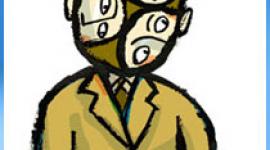Switching Characteristics
How to tell when a person with Dissociative Identity Disorder is about to switch personalities.
Training Instructor Bethesda PsycHealth Institute 1990
- headache
- pressure inside the head
- stiff neck - (usually not as intense as with memory retrieval)
- pressure at the base of the head - (less intense than with memory retrieval)
- pupil dilation
- pressure behind the eyes
- blurry vision - (clears, then becomes blurry)
- eyes become - (watery or glassy, glazed in appearance), (eyes can also appear reddened without memory retrieval. Reddened eyes without memory symptoms means that a part is functioning that has repressed materials attached to it.)
- eyes more sensitive to light
- lightheadedness or dizziness
- chills
- ears ring
- emotionally feeling more child-like
- mood swing - a change in mood
- thought pattern change - thoughts change about same subject and your response changes with it
- feelings and emotions change - change about same situation
- objects and people look different - dimensions are off, colors can look brighter or dimmer
- body looks and feels detached
- face looks and feels detached
- face looks different in the mirror
- laughter changes - different laughs, subtle different to flagrant
- light in a room changes to suddenly brighter or dimmer
- fainting feelings - physically like you might lose consciousness
- inability to concentrate and think clearly
- urgency to "do something"
- thoughts become louder
- orchestra of thoughts or "conversations," all with opposing views
APA Reference
Staff, H.
(2008, November 28). Switching Characteristics, HealthyPlace. Retrieved
on 2026, January 11 from https://www.healthyplace.com/abuse/wermany/switching-characteristics
Last Updated: September 25, 2015



